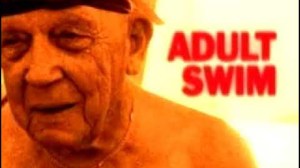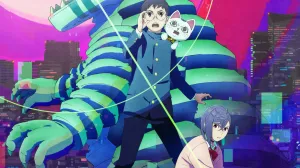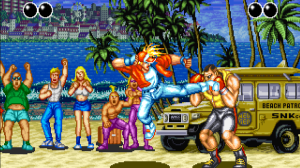From the moment that Star Wars: A New Hope debuted over four decades ago, the Star Wars saga has counted its exotic yet somehow reassuringly familiar assortment of non-human species and diverse collection of droids among its signature elements. Since then, each new film has built on the early traditions laid down in George Lucas’ famously lived-in galaxy, using state-of-the-art techniques to create imagination-stoking creatures and mechanicals – from full-blown characters such as Yoda, Jabba the Hut, Maz Kanata, and BB-8 to the most minor but eye-catching “extras.”
Videos by ComicBook.com
With Star Wars: The Rise of Skywalker making its debut on Blu-Ray, 4K, and digital formats, and the entire Skywalker Saga collected for the first time in one massive 4K set, fans will be able to take advantage of having the latest film in the franchise at their fingertips, where they can take longer, lingering looks at the many unique beings that populate the galaxy.
One of the key creative forces behind that fantastic menagerie is Neal Scanlan, who not only headed up special creature effects for The Rise of Skywalker, but also served in a similar capacity on all of the recent Star Wars films since the Walt Disney Company assumed stewardship of the franchise. Scanlan, who first built his reputation as a member of Jim Henson’s creature shop on projects like the Babe and Teenage Mutant Ninja Turtles films, as well as high-profile efforts like Prometheus and Jurassic World: Fallen Kingdom, joined ComicBook.com for a deep dive into some of The Rise of Skywalker‘s biggest challenges, including transforming Maz Kanata from a digital creation into a practical, real-world animatronic to finding the right look and attitude for the scene-stealing Babu Frik.

ComicBook.com: This is one of those jobs that only come around a few times in a career and I was curious, coming into Rise of Skywalker, what were the goalposts, the bars that you wanted to set for yourself to make this one of the most memorable pieces of work that you had done?
Neal Scanlan: I think it was an opportunity to work again with a director that I had had the good fortune of working with once before, so that doesn’t always happen very often. And so working with J.J. [Abrams] a second time around gave me and my crew a re-found confidence. I think we had a trust that we’d built with J.J. and an understanding so we were able to hit the ground running early, in our mind.
So that gave us the feeling of, “Come on, let’s just really try and make this as special as we can.” I think, really, what we wanted to do was to listen to anything that J.J. said and not say no – that anything was now possible, we were on the last film, and if we couldn’t make it happen on this film, then it would be maybe a long time before we got the chance to do it again.
We opened up any barriers and decided that, say with J.J. wanting Maz to be a completely animatronic puppet and be fully performed, “Well, hey, let’s just do this, and let’s look at the technologies that we can use and let’s look at how we can make that vision, that made that desire possible.”
And, at the same time, it was like, “Well, if we want to make some excuse to go to Jordan to shoot them live on location, let’s not just do 50 – let’s do 500.” So there was that kind of bravado, I think, and that ambition in all of us to say, “Let’s try to raise the bar,” and tread cautiously and tread with wisdom, because that’s what hopefully life brings to you, but actually try and put on the screen as an exciting a combination of different technologies and techniques as we could.
Like little Babu Frik was a very simple puppet in many ways, complex in others, but its technique of bringing it to life was very different than Maz, and some of the background characters that we did we were quite ambitious with. So, yes, it was a feeling of, “All for one, and one for all – let’s just do it.”
Tell me a little bit about how you developed the philosophy of the approach to Star Wars. It’s something that’s in all of our cultural DNA at this point, so when you first approached it, and then refined your approach this time around, what was the guiding philosophy of how you were going to do your job?
I think there’s a thing in all of us, and I think that we all identify it, but we have to be self-analytical about it at the very beginning and continue to do the same – we almost check ourselves. I know that when I went to see A New Hope, what was the most incredible thing about it was that I felt that it was a world that I was familiar with – I think we all did. Unlike, say, 2001[: A Space Odyssey], which felt like a world, so amazing, but still, I couldn’t really feel like I was attached to it in some way.
I think what we’ve always felt is that everything that we do in Star Wars, in the world of creatures and droids, etc., one of the things that everybody that’s on the team felt, is that George set up this feeling that we are in a place that is in a galaxy far, far away, but it’s a place that is tangible and something we can reach out for and something that we can touch almost, because there’s a familiarity about it. It obeys the laws so much, the natural laws of the weird species and all the other species that occupy this world, and the way that our planet works, etc. All of that is in Star Wars, even though it’s not in the [our] place. So I think that was the philosophy that we went towards.
To be specific about that, when we come to design a creature, we try to make it feel like its DNA is a logical DNA, that it abides by those laws to a large extent and that you could almost explain its evolutionary process. And that a droid, in some way, shape, or form, feels familiar, that we’ve seen that somewhere – maybe it’s the generator or the air conditioning pump or it’s a piece of agricultural machinery we’ve seen. Again, there is familiarity in this world and that one is able to press and push those as far as you go, but it feels like you could wake up one morning and there would be a Porg in the tree outside, because it’s not so crazily detached from some of the species that we have.
We always look at the design, and we always ask that question: “Have we crossed the line into an area where this feels too fantasy, or completely science fiction – too science fiction? That it would feel more comfortable in a film other than Star Wars?” Then we need to bring it back. We spent a lot of time, in a sense, debating that and being quite critical of anything we wished to go ahead and make, in order to hopefully continue to hold that to be true and to preserve what George had set up.
You mentioned one of the biggest challenges was Maz Kanata, and I honestly did not realize that Maz was a puppet until maybe my third viewing of the movie. Tell me how you got from an originally digital character to what you were able to pull off on screen so convincingly in this one.
In [Star Wars: The Force Awakens], J.J. had always wanted Maz to be practical. But because her design was the design that we all painted over many, many times, all the way through pre-production, and actually most of the way through production, we didn’t get the “Eureka!” moment with Maz until very, very late in the day. And so, at that point, we knew that she could only be digital because he’d actually shot some of our sequences already.
In order to make the digital character, we created what we would call a photorealistic maquette, so it was a life-size, real-world creation of what Maz would be like. She had her silicon skin, her hair was all punched in, any aspect of those things that were there. We had to give all that information in order to CG-create her, and make her look the way that J.J. wanted us to do. So when we came to do Rise of Skywalker, we had already, in a sense, created a real-world version of Maz. And now what we needed to do is effectively bring her to life using animatronics.
And what had happened in between that time is that our technology had moved on, our control systems have become more sophisticated, and there’s new technologies not only in small servo-driven motors, robotic motors, but also things like data suits, which are able to be worn by people, which read the motion of somebody and they could be pipelined through the system back to the animatronics.
Technology, from a performance perspective and from an animatronic perspective, had moved on, and we had also moved on in some of the use of our materials and how we could multi-layer those to get certain things, so it was a great thing that we created a physical version of mass to create the CG that took her to another level, and then we took the CG one to say, “Well, that’s what we have to rise up to.” So now our physical model needs to be as good as that. And so that was ultimately the challenge that we faced in order to get her on to the screen.
We were also motivated by a lot of the scenes that Maz was involved in that aren’t in the film, because obviously so much of what we do, all of those, is lost in the edits, as they may say, or in the compression of the storyline. A lot of those scenes were shot around Carrie [Fisher] – and obviously we knew that Carrie wasn’t there and that we didn’t have Carrie, we’d lost Carrie – and that, in some way, she was going to be put back into the film using visual effects, and it felt much more respectful and much more legitimate to have a physical entity there to act with people like Rey – Daisy [Ridley], etc, – that it felt the right thing to do, because obviously we all love Carrie and it felt like that’s what we should do as a family that was the way to shoot those sequences, so she had more than just an on-screen presence, she had a bit of a kind of heart to her as well for the crew and for all of us.
And Babu Frik is a different sort of character, in that he’s a scene-stealer and played for more for fun than anything. Tell me about taking that character from concept to execution and having people respond so well to what you what you pulled off with him.
The first thing is that there are certain characters that we don’t want you to think they’re CG; we want to make a purposeful choice, we are making a conscious decision to say we want you, as the audience, to engage with this character as a practical character. We want you to know it’s a puppet, because I think in your soul, you respond to it very differently. You respond on a theatrical level and so much of our childhood, I think, comes out in those moments.
So Babu was a character that J.J. mentioned to us very early on. His role in the film changed, but his physicality and his description was something that remained constant. And one of our concept designers, Ivan Manzella, came up with this design and did a little eight-inch character that we showed to J.J. and to Kathy [Kennedy] and to Michelle [Rejwan], and everybody said, “Oh, my God, that’s Babu!”
We managed to get Babu’s design very, very early on, and then we looked at how we’re going to bring them to life. And in the early stages, he was probably going to be in a much more bespoke environment. And the idea was, “Well, let’s use some rods,” so we can rod-puppetry him, very much a traditional sense of how to bring something to life. There are 23 motors and wires in Babu’s head, and there are a lot of motors to do his individual finger movement, but essentially, it’s a simple rod puppet that took five puppeteers to bring to life.
As the story progressed, he lost his bespoke environment. and ended up in this sequence where he was going to essentially remove C-3PO’s memory. We now found ourselves in this droid shop and it was Roger Guyett who said, “Well, look, why don’t we keep this the same, and we’ll put the puppeteers in green suits with green rods, and we’ll shoot this full reel in the set, in every single sense. And then obviously, digitally, we’ll put the background back here and we’ll replace or repaint any passive props or any other things.”
It was a fantastic combination of traditional puppetry and digital FX. But it was also enhanced, I think, wonderfully by Shirley Henderson’s involvement. She obviously vocalized the lines. And, for first time ever that we’ve done this, she came to our workshop and she rehearsed with the puppeteers for a week. She actually operated by Babu’s mouth, so she had the controller for Babu’s mouth and his lips and other aspects around his lower jaw area. And so as we shot the sequence, Shirley would vocalize Babu and perform Babu’s mouth.
We had this really fantastic real-world [experience]. It was real theater: she was there, we were recording her dialogue, she was performing with us, and we were all working as a group along with J.J.’s direction. And she would ad-lib, and she would make us laugh, she would make us giggle, and the puppeteers would respond to that. It’s a very organic process and everybody just plays off each other. And so I think Shirley must be credited, along with J.J., as adding an enormous amount of atmosphere to shooting this.
I think it comes across [that way] and that’s why people love it for what it is. It’s a moment to relax and enjoy and be entertained in a way that I think we’re all conscious of how it’s happening, and we just go with it. And that was the purpose of that bill. And he’s the smallest character I think that Star Wars has had on that level, so that was the first, as well. There’s something about being entertained by a very small little character, which I think is also incredibly engaging.
How crucial was the original Star Wars in setting you on the path that you’re following today? Was that like a watershed moment, experiencing what was done in those films, toward making you become who you are?
Yeah, absolutely. I had a moment as a six-year-old boy when I first saw a Ray Harryhausen film – it was Jason and the Argonauts – come to life on screen, and it was almost like I had a spiritual experience. I knew right from that moment that that was what I wanted to do. Something inside me, a switch got turned on. And so I was an absolute Harryhausen obsessive and followed his work and was utterly enthralled by his work, and I think nothing would have steered me off that path until Star Wars came along.
I remember going to see A New Hope and having an almost second switch thrown – “Oh my gosh – this is incredible!” Not only did he have the amazing work of Phil Tippett but also the incredible use of all this fantastic, traditional world like matte paintings and stuff I’d adored in King Kong. But it also had this new camera, this DykstraFlex, computer-controlled, moving. And so, absolutely, that was the second light switch that would be the switch that turned on in me: “This is my future. This is where I need to go in order to stay on track.”
I was bemoaning the fact that I was too young at that time to get involved, that people like Phil Tippett beat me to it! And he sent me on that route. By the time I became an active member of the film industry, animatronics was just in its infancy. And so that seemed to be the natural place for me to fall into. And it was indeed the place that I ended up folding into, and that was really absolutely it.
I think Star Wars, to me, is – still is – an incredibly creative amalgamation of so many creative, brilliant people, wasn’t it? I see that happening all the time, when groups of people come together at a certain moment and something landmark happens and all of those films always influenced me in some way, shape, or form.
*****
Star Wars: The Rise of Skywalker is out now on 4K Ultra HD, Blu-ray, DVD, and Digital HD.








